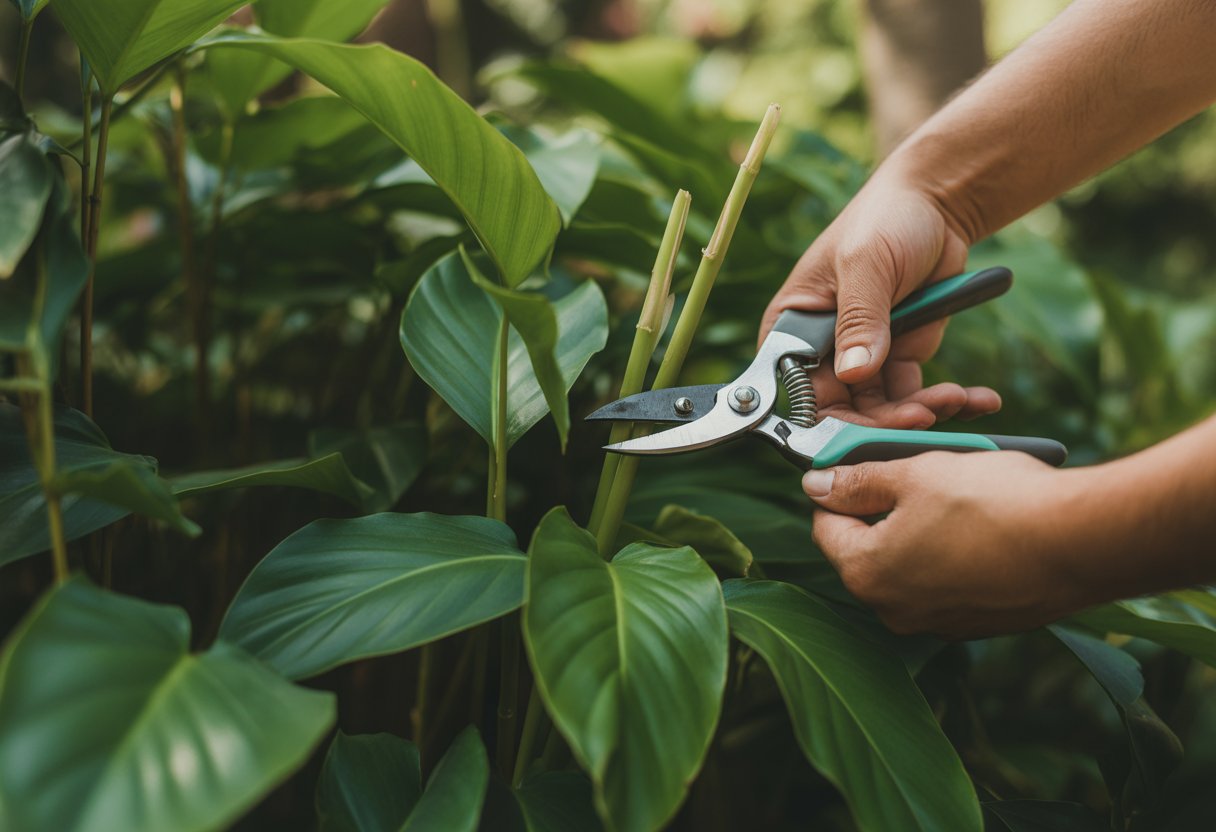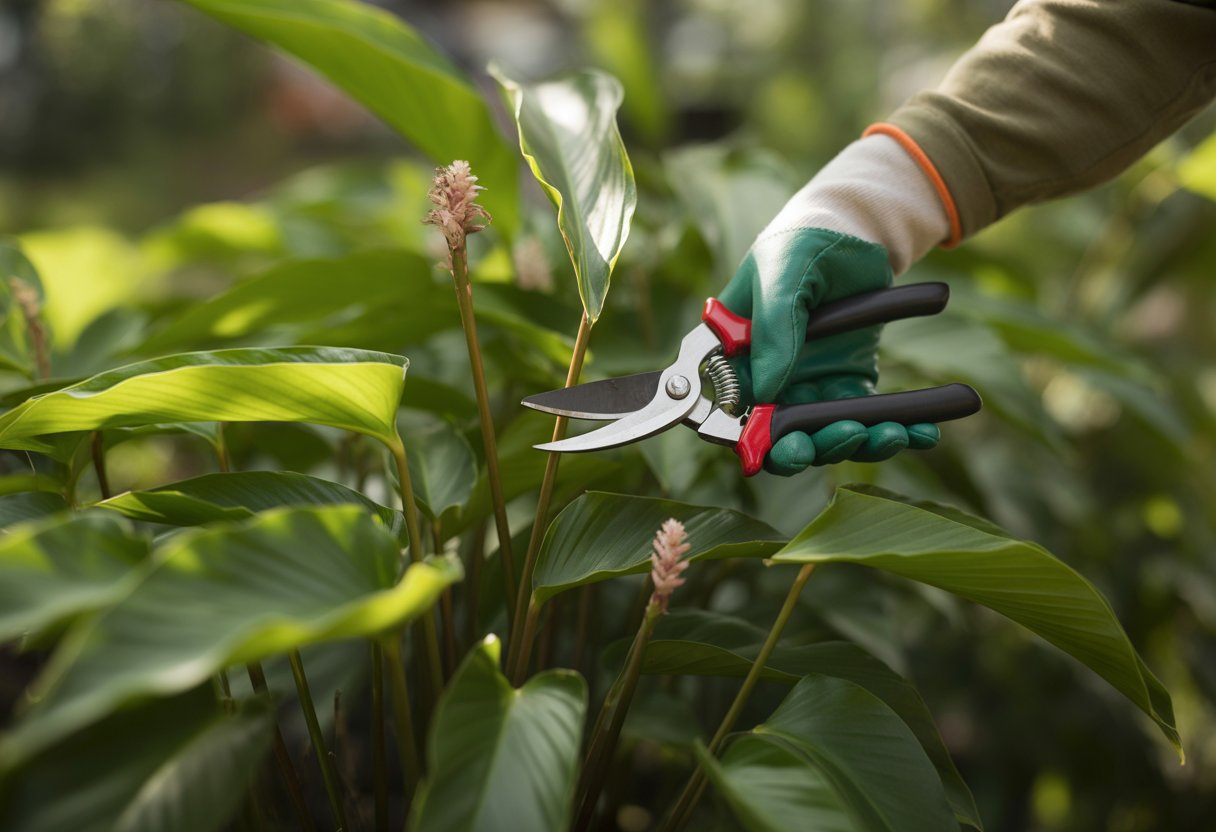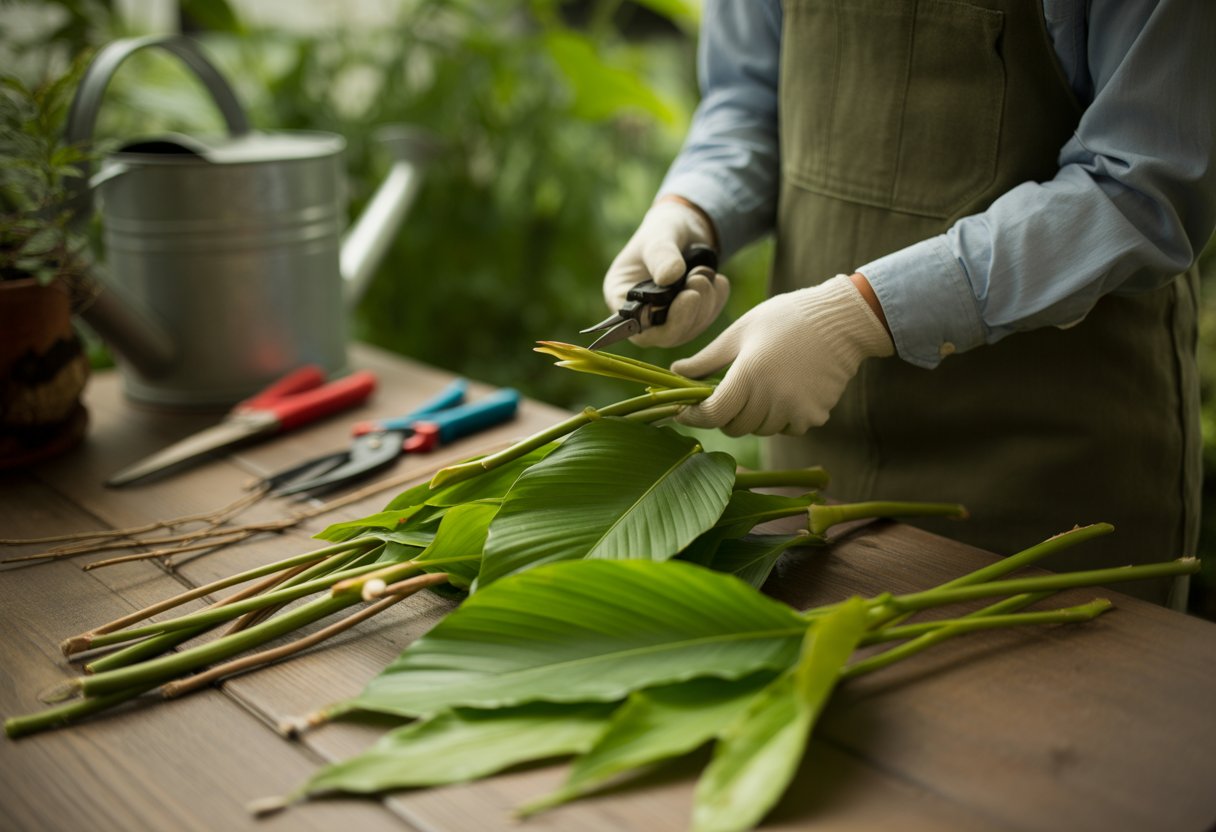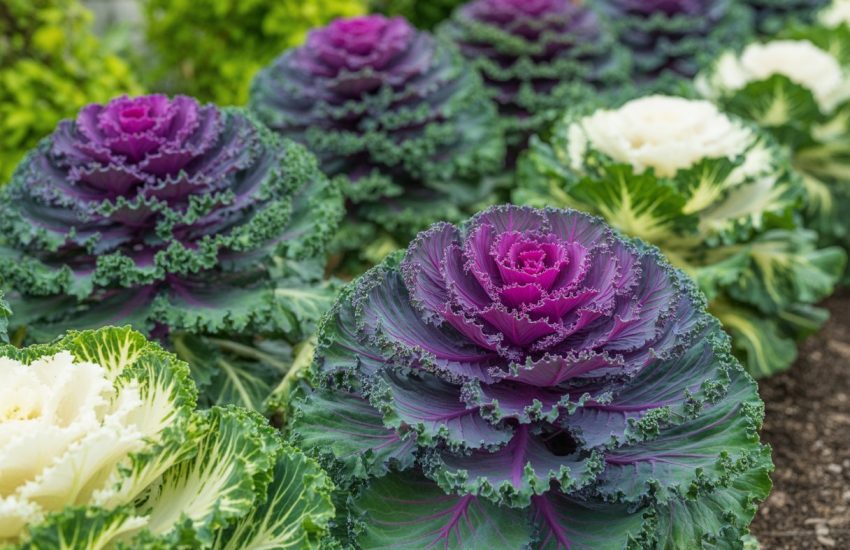How to Prune Wild Ginger for Healthy Growth and Enhanced Appearance
Pruning wild ginger helps you keep it in shape, boost healthy growth, and stop it from taking over your garden. The best way to prune wild ginger is to trim back the stems and remove dead or damaged leaves in early spring or late fall.
This approach keeps the plant tidy without messing up its natural spreading habit.

Wild ginger spreads underground by rhizomes, so you usually only need to do light pruning. Cutting back overgrown areas also helps air move through the plant, which cuts down on disease.
Pruning lets wild ginger thrive as a ground cover and blend in with other plants. If you know when and how to prune, you’ll have a healthier, better-looking plant.
Understanding Wild Ginger and Its Varieties
Wild ginger comes in several species, each with great ground cover and interesting foliage. Knowing which species you’ve got helps you prune it the right way.
It’s also important to tell true wild ginger apart from lookalike ginger plants, since their care is different.
Key Species: Asarum Canadense and Asarum Europaeum
Asarum canadense grows wild in North America. You’ll spot its heart-shaped leaves and low stems, plus small, brownish-purple flowers hiding near the soil.
This one likes shade and moist spots, spreading slowly by rhizomes.
Asarum europaeum, or European wild ginger, has glossy, dark green leaves and a purple underside. Its reddish-brown flowers hug the ground.
It prefers shaded, well-drained areas and usually forms a dense mat faster than A. canadense.
Neither species is related to Zingiber officinale, the ginger you cook with. Their growth and needs are totally different from true gingers in the Zingiberaceae family.
Distinguishing Wild Ginger from Other Gingers
Real wild ginger belongs to Asarum, not the Zingiber genus like Zingiber officinale or ginger lilies (Hedychium species). Wild ginger hugs the ground and doesn’t send up tall stems.
Other ginger plants tend to have edible rhizomes and taller blooms. Wild ginger’s main claim to fame is its foliage and how well it covers ground—not its flavor.
If you mix them up, you might prune them wrong or expect things they just won’t do. Look for leaf shape, flower position, and how the plant grows to tell them apart.
Growth Habits and Ground Cover Benefits
Wild ginger spreads out, forming dense mats with its underground rhizomes. That thick growth blocks weeds and helps soil stay moist in shady areas.
It expands slowly but steadily, which makes it easy to manage in shade gardens. A. europaeum even keeps its leaves looking good all year, unlike many ground covers.
Because it grows so close to the ground, you’ll want to prune gently so you don’t hurt the rhizomes. Understanding how it grows helps you keep it healthy without overdoing it.
Preparing to Prune Wild Ginger

Start with some prep work—choose the right tools, pick a good time, and check your soil and site. Getting these basics right makes pruning go smoother and helps the plant bounce back.
Choosing Proper Tools and Safety Precautions
Use sharp pruning shears for clean cuts. Clean your shears before you start to stop diseases from spreading.
Gloves keep your hands safe from dirt and possible irritants. If the patch is thick, long-handled tools make reaching easier.
Good lighting helps you see what you’re doing. Avoid dull or rusty tools—they can crush stems and slow healing.
Best Time and Conditions for Pruning
You’ll want to prune wild ginger in late winter or early spring, right before new growth starts. Prune during dry weather to lower the risk of infection.
Skip pruning during heat waves or heavy rain. The plant likes partial sun, so try not to prune when the sun’s blazing.
Light, regular pruning keeps things neat and avoids shocking the plant.
Soil and Site Considerations
Wild ginger likes well-draining soil and can handle many soil types. It does best in slightly acidic to neutral pH, around 6.0 to 7.0.
It’s hardy in USDA zones 4 to 9, so think about your local climate. Make sure the spot holds moisture but doesn’t get soggy.
Before you prune, check the area. If the plant looks stressed, try adjusting your watering or improving drainage first.
How to Prune Wild Ginger Effectively
Pruning wild ginger isn’t complicated, but you do need to pay attention to how it grows. The main jobs are trimming leaves, managing rhizomes, and keeping the plant from spreading where you don’t want it.
Step-by-Step Pruning Techniques
Start with clean, sharp shears and snip off any dead or damaged leaves. Cut close to the soil line so the plant gets better airflow.
Trim healthy leaves only if they’re crowding other plants or blocking light. Cut down near the stem to help prevent disease.
Don’t chop the whole plant at once—prune a bit at a time during the season so it recovers better. Consistent trimming encourages new leaves and keeps things tidy.
Managing Rhizomes for Healthy Growth
Wild ginger spreads using underground rhizomes that look like thick roots. To keep it in check, dig gently around the rhizomes so you don’t hurt them.
If things get crowded, trim or divide the rhizomes in early spring or fall. Use a clean knife to slice off sections with healthy buds and roots.
Taking out old or thick rhizomes can perk up the plant. Replant the divided pieces right away in moist soil so they don’t dry out.
Addressing Overgrowth and Maintenance
Wild ginger sometimes gets a little too enthusiastic and starts taking over. Use shears to cut back patches that are getting out of hand.
If it’s spreading past where you want it, dig up some rhizomes at the edges. That helps keep it contained.
Check on the plants every month during the growing season. Remove any dead stuff to keep disease away and the patch looking good.
Post-Pruning Care and Troubleshooting

After pruning, wild ginger needs a little TLC to bounce back strong. Paying attention to watering, watching for pests and diseases, and working with the plant’s natural cycle keeps it healthy and looking sharp.
Supporting Recovery and New Growth
Right after pruning, keep the soil moist but not soggy. Light, regular watering helps roots and shoots recover.
A balanced, slow-release fertilizer—something like 10-10-10—can give new growth a boost. Mulch with shredded leaves or another organic material to hold moisture and keep the soil temperature steady.
Try not to walk on the bed too much, since compacted soil stresses the plant. Watch for wilting or weird leaf colors so you can catch problems early.
Preventing and Dealing with Diseases
Wild ginger can get fungal issues like leaf spot or root rot if it’s too wet or in poorly drained soil. Prune when the weather’s dry and always remove dead or sick leaves.
If you spot leaf spots, snip off the affected leaves and thin out crowded spots for better airflow. If things get bad, you might try a little fungicide with chlorothalonil or copper, but only if you really need to.
Clean your tools between cuts to keep diseases from spreading. Make sure your soil drains well to avoid root problems.
Managing Pests in Wild Ginger Beds
Slugs and snails love wild ginger leaves and can leave holes everywhere. Try picking them off early in the morning or use iron phosphate baits to cut their numbers.
Aphids show up now and then, leaving sticky stuff behind. Bringing in ladybugs or spraying with insecticidal soap usually keeps them in check.
Check your plants often. The sooner you spot pests, the easier it is to deal with them and keep your wild ginger happy.
The Role of Dormancy in Care Cycles
Wild ginger goes dormant in late fall or when things get really dry. It does this to save up energy.
Try not to prune during dormancy. The plant isn’t very active then, and pruning could stress it out.
When wild ginger’s dormant, cut back on watering. Still, don’t let the soil dry out completely.
A layer of mulch helps keep the roots safe from cold snaps and weird temperature swings.


